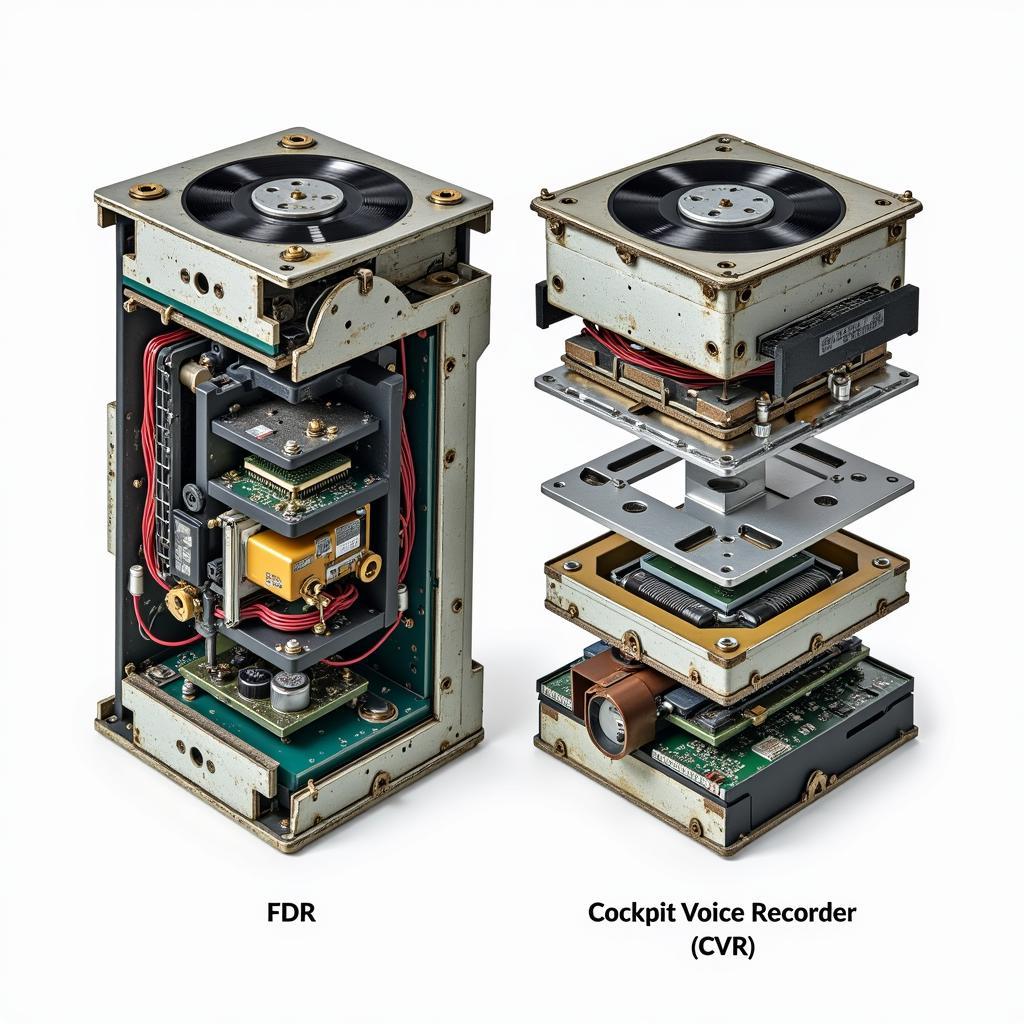Contrary to their name, black boxes in airplanes aren’t actually black. They are bright orange, a color specifically chosen to make them highly visible amidst wreckage and debris. This seemingly simple question unveils a world of fascinating details about flight safety, technology, and the crucial role these recorders play in accident investigations.
Decoding the Myth of the “Black Box”
The term “black box” is widely used, but its origins are somewhat murky. One theory suggests it stems from early flight recorders being housed in black, lightproof boxes to protect photographic film. Another possibility is the term originating from the charred appearance of recovered recorders after crashes. Regardless of its etymology, the vibrant orange color, officially known as “international orange,” is now the standard for flight recorders worldwide. This high-visibility hue makes locating the recorders significantly easier, particularly in challenging environments. Similar to how what color is tarmac impacts visibility on the ground, the color of the black box is crucial for its quick retrieval after an incident.
Why Orange? Visibility is Key
The primary reason for the orange color is simple: it stands out. In the chaotic aftermath of an airplane accident, every second counts. Search and rescue teams need to locate the black box quickly to begin the critical process of understanding what happened. The bright orange makes the recorder stand out against the backdrop of the ground, water, or even snow. This high contrast allows it to be spotted easily from a distance, both by the naked eye and from aerial searches.
What’s Inside a “Black Box”?
The term “black box” typically refers to two separate devices: the Flight Data Recorder (FDR) and the Cockpit Voice Recorder (CVR). The FDR meticulously tracks various flight parameters, including altitude, airspeed, direction, and control inputs. The CVR records all sounds within the cockpit, capturing pilot conversations, alarms, and other ambient noises. These two recorders provide crucial data for accident investigators, helping them piece together the events leading to an incident. Much like understanding what color is a black box on an airplane, knowing what’s inside these devices is fundamental to appreciating their importance.
How Do Black Boxes Survive Impacts?
Black boxes are designed to withstand extreme conditions. They are encased in robust, heat-resistant materials and undergo rigorous testing to ensure they can survive impacts, fires, and deep-sea pressure. These tests simulate the harsh environments they might encounter during a crash, including high-G forces, extreme temperatures, and prolonged submersion.
“The design and testing protocols for black boxes are incredibly stringent,” says Amelia Davis, Senior Aviation Safety Engineer. “These devices are built to survive almost anything, ensuring crucial data is preserved even in the most catastrophic scenarios.”
 Flight Data Recorder and Cockpit Voice Recorder Components
Flight Data Recorder and Cockpit Voice Recorder Components
The Importance of Black Boxes in Aviation Safety
Black boxes are invaluable tools for enhancing aviation safety. By providing a detailed record of flights, they help investigators understand the causes of accidents and develop preventative measures. This information contributes to improving aircraft design, pilot training, and air traffic control procedures, ultimately making air travel safer for everyone.
“Black boxes are not just about understanding past accidents,” explains Captain Michael Carter, a veteran pilot with over 20 years of experience. “They’re about learning from those accidents to prevent future ones. They are essential for the continuous improvement of aviation safety.” Understanding de q color es la caja negra de los aviones is one thing, but understanding their impact on safety is just as crucial. Similarly, the color of a jet, like discussed in what color is jet, can have safety implications, albeit different ones.
The Future of Black Box Technology
The technology behind black boxes is constantly evolving. Researchers are exploring new methods of data retrieval, including live streaming data from aircraft and using deployable recorders that eject from the plane during an emergency. These advancements aim to improve the speed and efficiency of accident investigations, further contributing to aviation safety.
Conclusion
So, while the name “black box” might be misleading, its purpose is clear: to provide vital information in the event of an aircraft accident. The bright orange color is a crucial feature, enabling swift recovery and ensuring valuable data is retrieved, ultimately contributing to a safer skies for all. Understanding that the black box is orange, and why, is just the beginning of appreciating its critical role in aviation safety. This, combined with understanding other aspects of aviation, such as even something seemingly trivial like what color is amelia earhart’s hair, builds a more complete picture of the history and nuances of flight.
FAQ
- What is the real color of a black box? Bright orange.
- Why are they called black boxes if they are orange? The origin is uncertain, potentially from early designs or post-crash appearance.
- What are the two main components of a black box? The Flight Data Recorder (FDR) and the Cockpit Voice Recorder (CVR).
- How do black boxes survive crashes? They are designed with robust materials and tested to withstand extreme conditions.
- Why is the color orange important? It enhances visibility for quick retrieval after an accident.
- What does the future hold for black box technology? Researchers are exploring live streaming data and deployable recorders.
- How do black boxes contribute to aviation safety? They provide data for accident investigations, leading to preventative measures and improvements.
Need support? Contact us 24/7: Phone: 0373298888, Email: [email protected] or visit us at 86 Cau Giay, Hanoi.
